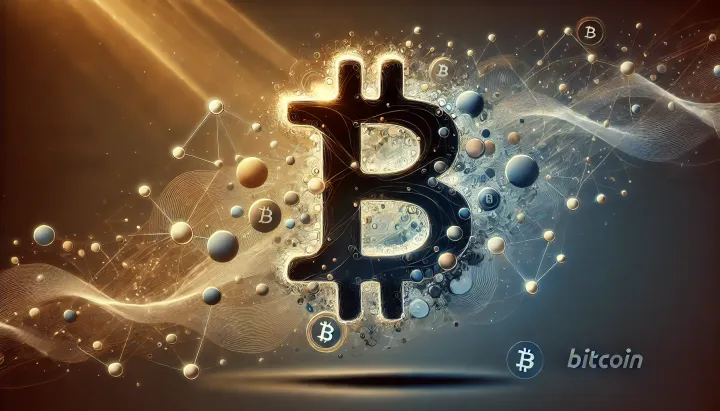Bitcoin as Scarcity Protocol and Societal Catalyst
The September 15, 2025 episode of The Bitcoin Edge with Paula features Jesse Tevelow describing Bitcoin as a protocol distinct from altcoin products, designed to counter fiat debasement through fixed supply.

- My 'briefing notes' summarize the content of podcast episodes; they do not reflect my own views.
- They contain (1) a summary of podcast content, (2) potential information gaps, and (3) some speculative views on wider Bitcoin implications.
- Pay attention to broadcast dates (I often summarize older episodes)
- Some episodes I summarize may be sponsored: don't trust, verify, if the information you are looking for is to be used for decision-making.
Summary
The September 15, 2025 episode of The Bitcoin Edge with Paula features Jesse Tevelow describing Bitcoin as a protocol distinct from altcoin products, designed to counter fiat debasement through fixed supply. He argues that Bitcoin fosters low time preference, individual sovereignty through self-custody, and institutional legitimacy via adoption by major players. Tevelow also links Bitcoin to spiritual renewal, educational reform, and potential synergy with AI in shaping a long-term societal renaissance.
Take-Home Messages
- Scarcity Protocol: Bitcoin’s fixed 21 million cap contrasts with fiat inflation and reframes value storage.
- Custody Responsibility: Sovereignty requires secure self-custody, yet losses highlight user education gaps.
- Institutional Entry: Corporate and government adoption lowers existential risks but sparks governance tensions.
- Cultural Narrative: Bitcoin is framed not just as money but as ideology, reshaping time preference and values.
- Future Synergies: Combining AI with Bitcoin’s value layer is envisioned as a foundation for a new renaissance.
Overview
Jesse Tevelow explains that Bitcoin is a protocol with a fixed supply, not a product like altcoins, which he describes as derivatives or distractions. He argues that scarcity drives a shift from high time preference under fiat to low time preference under Bitcoin, encouraging long-term planning. In his view, price appreciation follows from this adoption dynamic rather than speculation alone.
He reflects on early exposure to Bitcoin, diversions into altcoins and NFTs, and eventual conviction that Bitcoin uniquely ensures resilience against inflationary systems. He cites personal experience with regulatory suppression, including being de-banked, as evidence of fiat institutions resisting innovation. The growing presence of institutions and favorable policy signals is framed as reducing existential risk for Bitcoin’s future.
Tevelow emphasizes that self-custody remains essential to sovereignty, but mistakes and scams expose a vulnerability for newcomers. He urges holders to learn custody fundamentals while recognizing that third-party products are still evolving. He notes that the industry remains immature, comparing today’s state to the early internet with clunky user experiences and experimentation.
Beyond finance, Tevelow links Bitcoin to cultural and even spiritual transformation. He argues that fiat corruption extends into education and social structures, while Bitcoin restores truth and responsibility. He speculates that pairing Bitcoin’s stable value base with AI’s adaptive capabilities could spark a “second renaissance” that reshapes human institutions and communities.
Stakeholder Perspectives
- Retail Holders: Seek secure, user-friendly custody solutions that protect against theft or error.
- Institutional Investors: Want regulatory clarity and liquidity that allows large-scale participation.
- Regulators and Policymakers: Balance innovation with consumer protection and systemic stability.
- Technology Developers: Must improve wallets, recovery tools, and financial products without diluting sovereignty.
- Educators and Media: Aim to provide accurate frameworks distinguishing Bitcoin’s protocol role from speculative assets.
Implications and Future Outlook
Bitcoin’s framing as a scarcity-based protocol challenges fiat systems and invites structural adaptation. As institutional adoption accelerates, policymakers must balance systemic stability with Bitcoin’s decentralization. Without effective safeguards, risks of misuse and volatility could reinforce skepticism despite its underlying resilience.
Education and custody remain critical determinants of sustainable adoption. If users lack the tools or knowledge to protect their assets, sovereignty cannot scale beyond early enthusiasts. Widespread losses or scams could undermine confidence and fuel restrictive regulations, slowing integration into the financial mainstream.
The broader narrative positions Bitcoin as both financial infrastructure and social catalyst. This dual role shapes adoption as much through cultural movements as through technical developments. Long-term implications include altered time preference, institutional legitimacy, and the prospect of pairing Bitcoin with AI to reshape social and economic systems.
Some Key Information Gaps
- What empirical models can assess whether Bitcoin’s valuation could plausibly reach $10–20 million per coin? Robust forecasting is essential to guide investment decisions and policy planning.
- How might governments repeat or extend Project Chokepoint-style suppression against Bitcoin companies? Understanding regulatory threats informs resilience strategies for businesses and entrepreneurs.
- What scalable education models ensure users adopt robust self-custody practices? Stronger frameworks are needed to protect users while preserving sovereignty.
- What governance tensions arise as institutions adopt Bitcoin at scale? Clarifying the balance between decentralization and institutional involvement will shape long-term trust.
- How could AI systems benefit from Bitcoin as a value layer without amplifying systemic risks? Exploring synergies is crucial to harness opportunities while mitigating unintended consequences.
Broader Implications for Bitcoin
Monetary Systems Under Pressure
Bitcoin’s growth intensifies scrutiny of fiat’s long-term viability, especially in inflationary environments. Governments may be compelled to consider hybrid reserves or new monetary tools as citizens adopt alternatives. The transition could reshape global finance by redistributing monetary power away from centralized authorities.
Sovereignty and Security at Scale
As more individuals adopt self-custody, systemic resilience increases but so does exposure to user error. Broad adoption will require wallets and recovery systems that preserve sovereignty while minimizing irreversible mistakes. This tension will drive innovation in security architecture and shape regulatory frameworks.
Cultural and Institutional Realignment
Bitcoin’s framing as “truth money” challenges existing education, governance, and media systems. Over time, the narrative could reinforce movements for transparency, accountability, and localized decision-making. Such cultural shifts may prove as significant as financial impacts, redefining public trust in institutions.
AI-Bitcoin Convergence
Integrating Bitcoin’s fixed monetary base with AI’s dynamic optimization could create novel governance and coordination tools. Properly managed, this synergy may reduce systemic inefficiencies and support long-term prosperity. If mishandled, however, it risks concentrating power in new forms, raising urgent ethical and political questions.



Comments ()